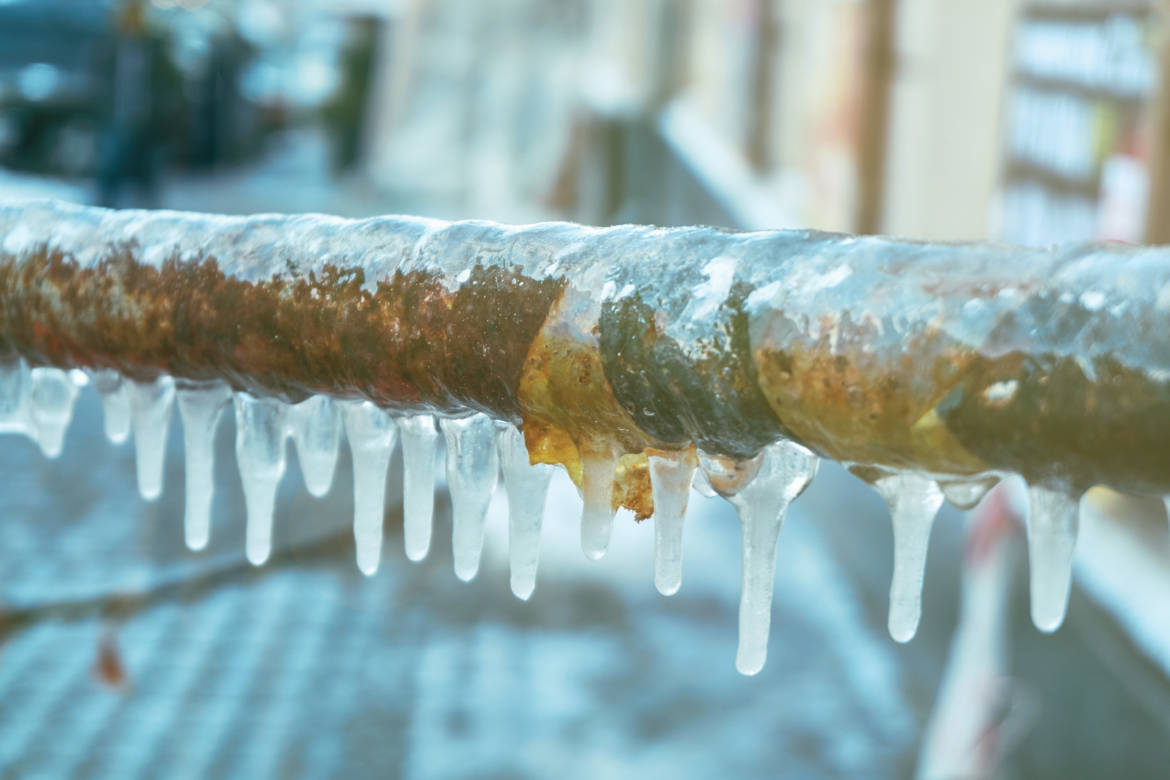Preventing Frozen Pipes in Cold Weather: Expert Strategies
Preventing Frozen Pipes in Cold Weather: Expert Strategies
Blog Article
What're your thoughts about How to prepare your home plumbing for winter weather?

Winter can wreak havoc on your plumbing, especially by freezing pipelines. Here's exactly how to stop it from taking place and what to do if it does.
Intro
As temperatures drop, the risk of icy pipelines rises, possibly bring about expensive repair work and water damages. Recognizing how to stop frozen pipes is critical for house owners in cold environments.
Avoidance Tips
Insulating prone pipes
Cover pipelines in insulation sleeves or utilize warmth tape to safeguard them from freezing temperature levels. Concentrate on pipelines in unheated or external locations of the home.
Home heating techniques
Keep interior spaces effectively warmed, especially areas with plumbing. Open up closet doors to permit warm air to circulate around pipelines under sinks.
Just how to recognize icy pipes
Search for decreased water circulation from taps, uncommon smells or noises from pipes, and noticeable frost on subjected pipelines.
Long-Term Solutions
Structural modifications
Think about rerouting pipes far from exterior walls or unheated locations. Include added insulation to attic rooms, basements, and crawl spaces.
Upgrading insulation
Invest in premium insulation for pipes, attic rooms, and wall surfaces. Appropriate insulation helps keep regular temperature levels and decreases the risk of icy pipes.
Shielding Outside Pipes
Garden hoses and outdoor faucets
Disconnect and drain pipes garden hoses before winter. Mount frost-proof spigots or cover outdoor faucets with shielded caps.
Recognizing Frozen Pipes
What creates pipelines to ice up?
Pipelines freeze when revealed to temperature levels listed below 32 ° F (0 ° C) for extended durations. As water inside the pipelines freezes, it expands, taxing the pipeline wall surfaces and potentially causing them to burst.
Risks and damages
Frozen pipelines can lead to supply of water interruptions, residential or commercial property damages, and pricey fixings. Ruptured pipelines can flooding homes and trigger comprehensive architectural damages.
Indications of Frozen Pipes
Identifying icy pipes early can prevent them from breaking.
What to Do If Your Pipes Freeze
Immediate actions to take
If you suspect frozen pipes, maintain taps open to alleviate pressure as the ice thaws. Make use of a hairdryer or towels taken in hot water to thaw pipelines gradually.
Final thought
Stopping frozen pipes requires positive steps and fast actions. By understanding the reasons, signs, and safety nets, homeowners can secure their plumbing throughout winter.
5 Ways to Prevent Frozen Pipes
Drain Outdoor Faucets and Disconnect Hoses
First, close the shut-off valve that controls the flow of water in the pipe to your outdoor faucet. Then, head outside to disconnect and drain your hose and open the outdoor faucet to allow the water to completely drain out of the line. Turn off the faucet when done. Finally, head back to the shut-off valve and drain the remaining water inside the pipe into a bucket or container. Additionally, if you have a home irrigation system, you should consider hiring an expert to clear the system of water each year.
Insulate Pipes
One of the best and most cost-effective methods for preventing frozen water pipes is to wrap your pipes with insulation. This is especially important for areas in your home that aren’t exposed to heat, such as an attic. We suggest using foam sleeves, which can typically be found at your local hardware store.
Keep Heat Running at 65
Your pipes are located inside your walls, and the temperature there is much colder than the rest of the house. To prevent your pipes from freezing, The Insurance Information Institute suggests that you keep your home heated to at least 65 degrees, even when traveling. You may want to invest in smart devices that can keep an eye on the temperature in your home while you’re away.
Leave Water Dripping
Moving water — even a small trickle — can prevent ice from forming inside your pipes. When freezing temps are imminent, start a drip of water from all faucets that serve exposed pipes. Leaving a few faucets running will also help relieve pressure inside the pipes and help prevent a rupture if the water inside freezes.
Open Cupboard Doors
Warm your kitchen and bathroom pipes by opening cupboards and vanities. You should also leave your interior doors ajar to help warm air circulate evenly throughout your home.

Do you like reading about Helpful Tips to Prevent Frozen Pipes this Winter? Give feedback below. We will be delighted to hear your reactions about this piece. We are looking forward that you visit us again soon. So long as you appreciated our post kindly don't forget to pass it around. I treasure reading our article about How To Avoid Freezing Pipes.
Get Estimate Report this page